Pacific Dining Car
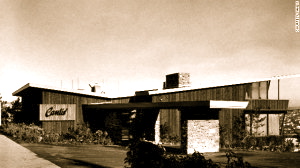
OERM Snap Shot of the Union Pacific Dining Car
Take a rare look into the past, as we see inside UP dining car #405. This car was all but forgotten about when OERM was able to save her and bring her back to California. She has been cleaned up, but inside is all VERY original. See why Orange Empire Railway Museum is so lucky to have such an original car.
 History of Pacific Dining Car by Haley Kaufman University of Southern California. Canlis, built in 1950, was designed by Roland Terry and Pete Wimberly.
History of Pacific Dining Car by Haley Kaufman University of Southern California. Canlis, built in 1950, was designed by Roland Terry and Pete Wimberly.
Pacific Dining Car has been one of Los Angeles’s favorite resturants for nearly a centruy. LOS ANGELES–Fred Cook and his Wife Grace moved out to California in the 1920’s after Fred’s dream of becoming a young tenor in an Opera fell through, according to Pacific Dining Car’s History Pamphlet and their urrent General Manager Nick Learning.
LOS ANGELES–Fred Cook and his Wife Grace moved out to California in the 1920s after Fred’s dream of becoming a young tenor in an Opera fell through, according to Pacific Dining Car’s History Pamphlet and their urrent General Manager Nick Learning.
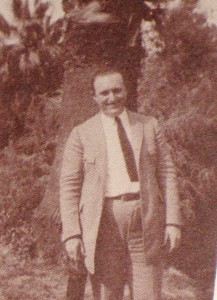 Fred Cook when he and Grace were founding Pacific Dining Car 1920 Fred Cook when he and Grace were founding Pacific Dining Car 1920 |
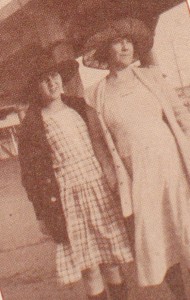 Grace and daughter Virginia Cook 1920 Grace and daughter Virginia Cook 1920 |
When they moved, they brought with them the idea of starting a restaurant made out of an authentic railway dining car, which they would transform into an actual restaurant. One of their new friends allowed them to use his backyard to build their restaurant and another friend began the construction.
As construction continued Fed and Grace decided the space was too small for an entire restaurant and began building add ons to their original dining car, also adding wheels to make it mobile.
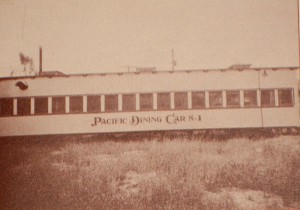 The first location in 1921 of Pacific Dining Car where it stayed for two years before being wheeled to the present day location of 6th and Witmer. The first location in 1921 of Pacific Dining Car where it stayed for two years before being wheeled to the present day location of 6th and Witmer. |
The little restaurant soon became a top hit, and one of the most popular restaurants in town. When it first opened, the restaurant served people seven days a week starting at 4pm. With Fred working in the restaurant and Grace baking, people would be lined up outside waiting to dine there.
And Pacific Dining Car wasn’t cheap. Because the food was of such high quality and had foods like savory steak with their own secret sauce, fresh vegetables, and to-die-for pies baked by Grace herself, the place was one-of-a-kind.
In 1923 the Pacific Dining Car, PDC, was forced to relocate after a spectator bought the land the original car resided on. The steel wheels wheeled the restaurant to its new location uptown, at 6th and Witmer where it still is today.
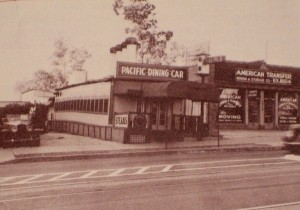 The present day location of PDC, 6th and Witmer. The present day location of PDC, 6th and Witmer. |
Business grew even more in the new location so the Cook’s hired a waitress to help out for a while. After about a year of business they realized hot, humid summers were no place for indoor, closed-in restaurants without air-conditioning, so during the hottest three months of the year they closed the restaurant up and went on vacation.
The PDC pamphlet stated the sign on the door read, “Too D. hot in L.A. Gone Fishing. Why the H. don’t you go, too? -Fred and Grace.” In 1927 the quality of beef became something people were using more and more as a test for the quality of restaurants.
Because of this, one of Fred’s customers and friends offered to show him how to select the best beef and the correct way to age and hang it. The savory stakes were a total hit with the diners who came to PDC. It became so popular they put in their own curing box and had the beef delivered right to PDC where they would hang and age it in a section of their own restaurant.
Due to the high quality steak, the menu remained fairly simple, but expensive. The pamphlet stated that prices for PDC’s food around that time, “started at 65 cents for the Pacific Dining Car special sirloin, up to a dollar for T-bones, buck-and-a-half for filet, and the bank-buster double sirloin went for $3.75. All considered quite dear in the twenties.”
Things like a side salad or baked potato were about 25 to 35 cents. If a young man took a woman on an expensive date at PDC he would have spent around $5.55 not including tip, which in those times was a hefty but well worth price. The 20’s turned out to be good for business, making PDC on of the best, well-known restaurants of that time.
However, the 30s were another story. By the late 1930’s Southern California has a higher bankruptcy rate than any other area in the country. Fred and Grace’s daughter, Virginia, and her Husband, Wes Idol, moved back to California from the East Cast to help out her parents. Virginia began hostestting and Wes cooked in the kitchen.
Eventually the prohibition ended and the economy began to rise again so people started returning to normal life. In honor of the end to the prohibition Fred added a new section to the PDC, a bar in the room the Club Car.
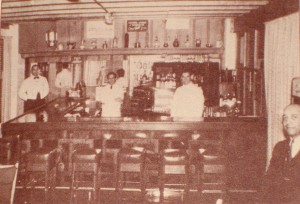 After the Prohibition ended Cook added the Club Car to PDC with a brand new bar. After the Prohibition ended Cook added the Club Car to PDC with a brand new bar. |
As business began to pick up even more, they continued the renovations by adding more rooms and space available for people to dine. People of all backgrounds, jobs, and social status’s flocked the newly improved PDC so they could dine in style.
Soon after, every evening a new starlet or famous personal was seen ding at PDC, and continued to come for they were guaranteed a pleasant evening with no interruptions.
Right when things looked as if they were back to normal, the war broke out and the entire country was flipped upside down again. Virginia continued helping out her parents at the restaurant with her son Wes Idol Jr. while her husband fought in the war.
But just as things got better after the great depression ended, so did things after WWII ended. And for the next two years business was great.
In 1947, two years later, Fred Cook passed away. His wife Grace decided she was going to keep the restaurant and turn the upstairs into an apartment where she could live so she could continuing working seven days a week, nine months a year.
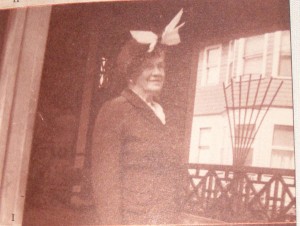 Grace Cook in the 60’s. Grace Cook in the 60’s. |
By the 1960s Grace was as well known in Los Angeles as some of her famous customers. But at the age of 80 she realized she needed to find someone to pass the restaurant on too.
She offered it to Virginia and Wes Sr. and worked with them as partners for eth next 10 years before she died.
When Wes Jr. returned from the serving in the army, he and his father became business partners. They closed the restaurant down for three weeks, completely remolded, refurbished, and installed a vital air-conditioning unit. While they kept the same feel of the old PDC they modernized it to fit with the 60’s.
In the mid 60s California became fascinated with good wine. Wes Jr. decided to go to Europe and find the best foreign wines to be brought to California and sold with dinner at PDC.
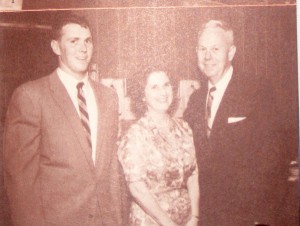 Virginia Cook Idol, Wes Idol Sr., and Wes Idol Jr. after buying the PDC. Virginia Cook Idol, Wes Idol Sr., and Wes Idol Jr. after buying the PDC. |
After Wes Sr. died, Wes Jr. purchased the restaurant from his mother in 1975 and began another remolding period.
This time he changed more of the foods and beverage choices, because the 70’s and 80’s became a period in time where costumers began to be more calorie conscious. He added lower calorie dishes like shellfish, and fish.
By 1990 they decided to open another PDC in Santa Monica. It resembles everything other original PDC has to offer, just in a new location.
They also decided to keep the restaurants open 24 hours a day, seven days a week, all year. There are now 5 different menus including: breakfast, lunch, dinner, late night, and tea selection. They have everything from eggs Benedict, to shellfish, to prime rib, to turkey sandwiches.
It has become one of the most well-known and high quality 24 hours a day dining spots in all of Los Angeles. The traditions that Fred started nearly a century ago live on today with changes always being made to better the restaurant and ensure the best quality experience imaginable.

